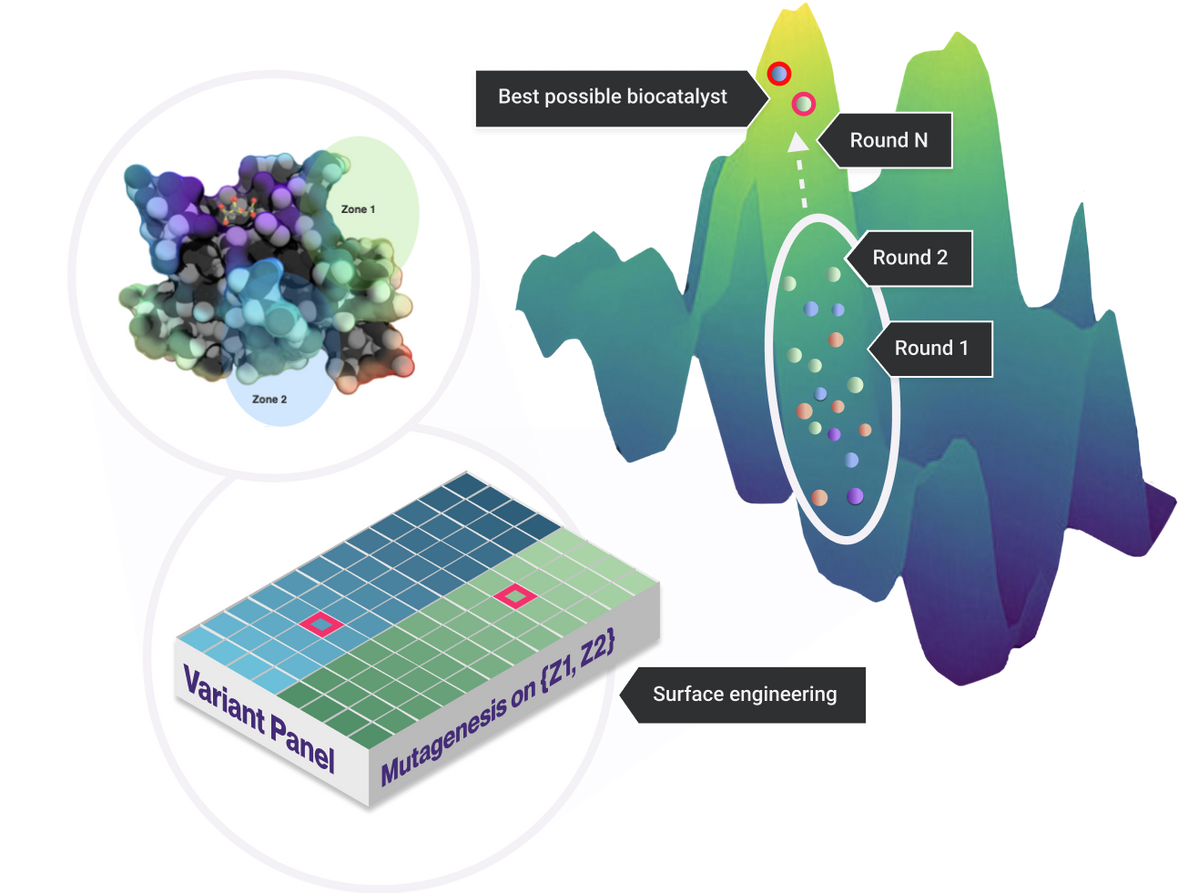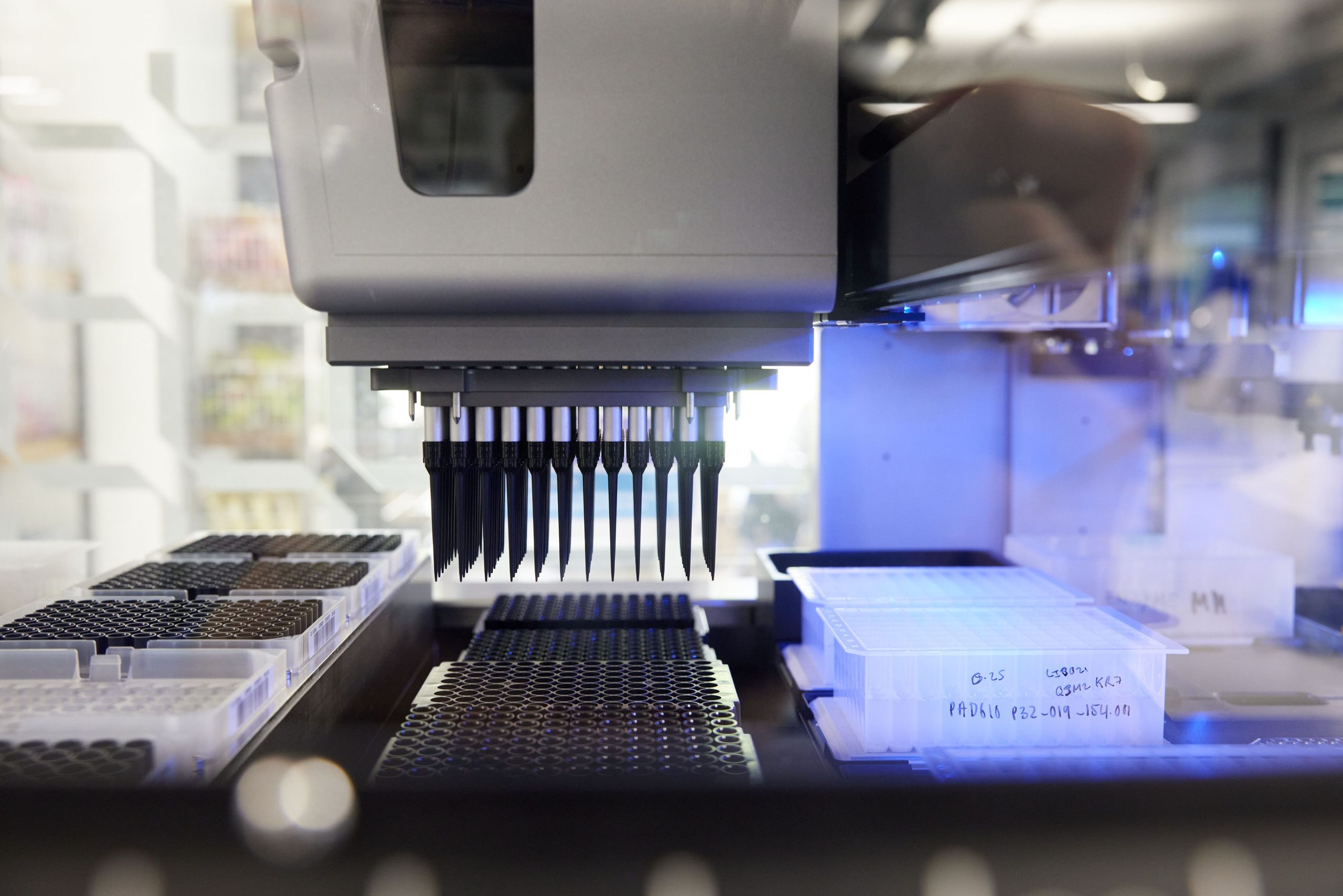Technology
Immobilization Engineering™
unlocks the power of your enzyme
The approach
Everything starts with your unique enzyme
Everything starts with the enzyme, and every enzyme is unique. Differences in homology and structure tell us that it’s impossible to apply a one-size-fits all approach to immobilization. That’s why we built general purpose tools to quickly navigate the relevant multi-factor design landscape for enzyme immobilization.

Bring immobilization into your lab
Predictive Immobilization Plates (PIPs)
We have built the first statistically-guided approach to immobilization where the relevant factor space is spanned in a simple 96-deep well plate. The benefit of 1,000,000 combinatorial options are collapsed to a set of 96 experiments, all pre-prepared in deep well plate format to help speed up research in the lab.

Learn from your data
PIP-Predict
At FabricNano, we apply our Design of Experiments (DoE) model to the entire collection of generated data. The combined approach of collecting PIP data and applying DoE means that we learn enough in 96 wells to predict the optimal immobilization protocol in silico from the 1 million datapoints you didn’t have to screen in the lab.

Protein engineering services
Interaction Engineering™ (IE)
FabricNano has taken the concept of sequence-to-function for active site mutagenesis and applied the same principles to sequence-to-immobilization performance. The surface mutagenesis strategy leverages a proprietary dataset generated on the first ever high-throughput automated workcell dedicated to studying immobilization. Private and secure servers run our LLM models, so that your enzyme sequence IP stays safe.













